Building Machinery: Market Drivers, Opportunities & Challenges
Earth Moving & CE Industry in India
CE generally refers to the relatively heavy machines/heavy-duty vehicles that are specially designed for executing construction (or demolition) tasks, mainly earthwork operations. An efficient, accurate, easy, & cost-effective method for the construction of complex & high-quality infra is possible only with the help of CE. India’s earth moving & CE industry has enjoyed strong growth over the last seven years as a result of rapid economic development in the country. CE (CE) can be classified into four groups – Earth moving, Road Construction, Concrete & Material Handling Equip’. Earth moving equip’ the largest group, followed by concrete equip’ & material handling equip’. To give a snapshot, the earth moving & CE is one of the most important sectors which forms around 7% - 8% of national gross domestic product (GDP). It is one of the largest contributors to economic activity, following the agriculture sector in India. Hence it acts a key driver for various infra development & to create growth opportunities to various other industries in the economy. Thus the CE industry by its tremendous growth over years paves way for valuable FDI inflows & attracted various int’l players. It is the sector which gives either direct or indirect employment to more than 30 million people in the country & hence it’s highly labor-intensive. Among the total infrastructural investment, around 60% accounts for CE. During the last two decades, we could notice that the earth moving & CE industry has made enormous progress & grown both in size & diversity.
How CE industry found its feet after slump
Given that India has an infra-deficit & needs about $7 tn over the next 7 years, this would itself trigger a Construction Equip’ (CE) business of around $180-200 bn at the current rate of equip’ penetration over the next 10 years. For every 0.5% increase in mechanization, the CE demand would rise by $30-35 bn. Winds of change are blowing across the Indian CE sector. The industry that saw a reversal of fortunes post FY’16 is currently piggybacking on Govt’s stimulants & investments to fast forward infra projects primarily development of roads & highways as well as coal mining. Big ticket Sagarmala, Bharatmala & Jal Marg Vikas projects will also give a leg up to development of rural roads & rural infra. Given that India has an infra-deficit & needs about $7 tn over the next 7 years, this would itself trigger a CE business of around $180-200 bn at the current rate of equip’ penetration over the next 10 years. For every 0.5% increase in mechanization, the CE demand would rise by $30-35 bn. CE industry had hit a rough patch during the three years FY’13-16 when infra & road building activities were subdued. Demand for construction machinery remained bogged down pushing back utilization of production capacities to 45%, a far cry from the current 75% utilization. In the present landscape, optimum capacity utilization is expected to be achieved over the next 3-4 years. There is enough capacity in the industry to meet future demand, with investments likely to be based on demand. Spurred by road & highway projects, some equip’ segments saw a spurt of 25-30% in last 9 months. Some opportunities are also emerging in railway real estate to replace ageing rail infra.
Market Perambulations
CE industry is today pegged at $4.3 bn in value with the Feedback Business Consultancy report forecasting industry volumes to spike upto over 1,20,000 units by 2021 growing at a CAGR of 20%. Current industry volumes are close to 75000 units. Policy changes in the infra segment are expected to boost the Equip’ industry to an est. $ 7.5 bn by 2020. Loaders, excavators & compactors dominate the road sector with backhoe loaders singularly contributing the largest chunk of the sales pie- 43% growing 10% last fiscal. In China this segment chips in with 0.5% sales while North America accounts for just 8.5%. Key players in the fray are Tata Hitachi, Kobelco, Hyundai, Case New Holland, & JCB with most of the machinery sporting a local content of 60-70%. However, some int’l players like Caterpillar & Kobelco CE continue to import a larger component basket. According to the Off-Highway Research Indian Annual Review 2018, CE sales in India grew 17% in 2017-18, building on the 36% upswing witnessed in 2016-17. Going forward, the Indian CE market will continue to be driven by construction, mining & other infra investments. The macro economic situation, govt policy & availability of funding will support this upsurge. The govt is taking action to reform procedures & policies such as the introduction of the RERA Bill, along with the speeding up of environmental issues, forest clearances & land acquisition issues to boost infra development. Crisil Research estimates project execution by the NHAI at 3,070 km in FY’18 & 3,300 km in FY19 from 2,625 km in FY’17. A BofA Merrill Lynch (BofAML) 2018-19 report has given a positive outlook for the highway sector with the govt fixing the national highways project award target at 20,000 km for FY19 up 25% over the previous year. The Union Budget 2018-19 has allocated $ 92.22 bn for the infra sector. Such a frenetic pace of execution over the next 5 years will mean a further leg up to demand for CE.
Top players take competition headlong
Among the top contestants in this market, is Tata Hitachi Construction Machinery India, with a primary focus on excavators for road construction, irrigation & mining operations. Tata Hitachi saw a robust 19% upswing in sales during the last fiscal & a 30% growth in the year earlier on a low base of the previous year. The current Indian govt is placing a lot of emphasis & investments into road infra. Many of the states have undertaken a lot of work linking rivers & canals that has helped the railways in expanding tracks as well as in laying of new tracks that has also given us good opportunities. The company is sprinting towards an average 15% uptick over the next couple of years egged on after establishment of a stable govt post 2019 elections. A broader 10-15% growth window is on the scanner across a 5 year timeframe. The company commands a 35% share of the excavator market with its CE ranging between 2T-120T. With capacity utilization peaking at 70%, Tata Hitachi is expanding for ushering more efficiency & for optimizing production. Production capacity was upped 20-25% last year to produce an annual 10k machines. In FY’19, it will be ramped up further to 12k units per year to meet growing demand. The average ticket size of a construction machine is pegged at Rs 50 lakh. A capital expenditure of Rs 80-100 crore is on the cards funded through internal accruals for launching new backhoe loaders next month that will give a fillip to sales in the following year. Earlier Tata Hitachi was making backhoe loaders but the business did not take off. Now it is making a fresh attempt to re-enter the market with a new machine developed from scratch with the support of Tata Technologies & Hitachi. The existing manufacturing facility for the machinery will be roped in for the production. Interestingly, the backhoe loader market is dominated by players such as Case New Holland, Caterpillar & JCB & Tata Hitachi will be up against tough competition. Besides, the company is looking to up its indigenization level from the existing 65-75% over the next 3 years. CE is moving to Euro IV in 2019 for which we are awaiting emission standards rules from the govt.
It is eloquent that the industry is being dominated by low end technology & cheaper machines. Consequently a level playing field was absent in India compared to global markets like Japan. In Japan CE machines meet Euro III emission norms. Lifecycle costs would be a better consideration compared to low end machines where upfront costs may be lower but may end up raising the operating costs by 50%. Sectors such as Irrigation, Ports, & Water Conservation have shown potential & hopeful that they will start driving demand in the coming times. The industry is working with the Govt towards integration of BS-IV (CEV) emission standards for wheeled equip’ which are due around Oct’20. New standards will lead to considerable technological advancement in the product placing CoS at par with other advanced markets such as USA & Europe. It will also contribute to the enhancement of the overall value chain of the product in terms of development, research & the percolation of this technology in the supply chain. Availability of 10ppm fuel is essential for the roll out of these emission norms & the fuel is expected to be available pan India by 2020. Meanwhile, Kobelco though well positioned in the CE market, has been constrained by the inability to match demand with supply. With a current market share of 10% it is into excavators that rake in a 20,000 unit market volume for multiple applications. The excavator market is expected to beef upto 30,000 units across 5 years when Kobelco is bullish of scaling up its market share by a few percentage points. Though earlier its localization stood at 40% it scaled back as right quality components could not be developed in India. Foreign vendors could not achieve economies of scale as volumes remained small. Kobelco sells 2000 machines annually & instead prefers to import many of the parts. It is currently beefing up its production capacity at its Sri City, Andhra Pradesh facility to 2500 units over the next 3 months & to 3000 units in the medium term.
Bad debts: A challenge
Optimistic against the backdrop of the impetus received from the govt’s infra push, Escorts CE foresees a major challenge emanating from mobilization of funding requirements for the govt projects. Large bank NPAs arising as projects run into problems & turn into bad debts has prevented contractors from accessing fresh funds for development projects. Machines are also becoming more advanced & require trained operators to man them. While the Govt is working on skilling operators & providing them subsidy for taking up training programmes, ICEMA has also joined hands for conducting certified courses. Escorts has also set up a separate not-for-profit company, Escorts Skill Development for imparting skilling initiatives to operators. The private sector needs to be given the required comfort for their active participation. Some positive initiation has already been taken by the govt through HAM (hybrid annuity scheme), & of FDI & we are sure much more will be done to bring back the interest of the private sector in the Infra projects. The company’s Vision 2022 includes benchmarking aftersales wherein IoT will be proactively leveraged as a tool to service the needs of the machines. JCB is also harnessing digital technologies in CEs through the integration of IoT & Big Data through an advanced telematics technology called JCB Livelink. Escorts is betting on entering new product categories as well as new product platforms. R&D investments are being enhanced to develop products supported by in-house expertise, foreign associations & technical tie-ups. Escorts recently forayed into excavators, wheel loaders & dumpers with an exclusive distribution agreement with CE major Doosan Infracore of S.Korea. Its heavy duty machine Jungli 4X4 model will soon see the launch of the 2WD option. Safety features such as anti-toppling, anti-lifting & operator sensing technologies available in City series of cranes will soon span the entire portfolio of cranes as an option.
CE industry is essentially of domestic consumption
While the story of the CE industry is essentially of domestic consumption, commodity prices like steel have seen a hardening over a short to medium term & stabilization over the long term. With the tailwinds of demand blowing in favor of the sector, all major players in the reckoning are optimistic of its positive impact. Of late, the sector’s exports were under strain as CoS competed to meet domestic demand. For Kobelco, exports till 2015 constituted 30% of the total product basket mainly to South East Asia –Myanmar, Indonesia, Malaysia, West Asia, East Africa, Jordan, Saudia Arabia, Ethiopia & Tanzania. At present, the export share has dwindled & become negligible as no spare capacity is available in the Indian plants. Hence exports have been shifted to global facilities. For JCB India, exports rose from eight countries in 2011 to > 90 in 2018. With most world markets coming back on the growth path, the company feels that its exports from India will only rise going forward. Further, Tata Hitachi exports to Middle East & Africa as well as neighboring countries with a key global trend being modern machines & connectivity. 30% of the machines are fitted with telematics on site that could ascertain fuel efficiency, health check of the engine, transmission, how the machine has worked, & access all info. online. This telematics trend is set to capture Indian market in a couple of years giving competition to Europe & Japan.
Market Drivers, Opportunities & Challenges
& Mining Equip’ Market” by MarketsAndMarkets, the global CE Market Worth $125.4 Bn by 2019. Among which Asia-Pacific is the Largest & Fastest Growing Construction & Mining Equip’ Market, & these markets have a potential to grow with a promising CAGR. Based on the report by A.T.Kearney & ICEM), In India, over the next few years the “Earth Moving & CE (ECE) is expected to grow at a tremendous CAGR of 20-25%. Currently ECE market accounts for only $3 bn, but its growth potential is more in near future, such that the market would be around $16-20 bn by 2020. Indian ECE market has the greatest capability to grow at 20-25% to reach 330k-450k unit sales by 2020. Construction industry of India is an important indicator of the development as it creates investment opportunities across various related sectors. The construction industry has contributed an est. ?6708 bn to the national GDP in 2011-12. The industry is fragmented, with a handful of major CoS involved in the construction activities across all segments; medium-sized CoS specializing in niche activities; & small & medium contractors who work on the subcontractor basis & carry out the work in the field. In 2011, there were slightly over 500 CE manufacturing CoS in all of India. The sector is labor-intensive and, including indirect jobs, provides employment to more than 35 million people. According to “Construction Market Report by DMG Events”, by 2012, the CE industry’s revenues were US$ 5.1 bn, but by 2020 it is est. to reach by US$ 22.7 bn. In the same way unit sale of CE is projected to reach to 82,000 by 2016 from 61,745 in 2012. Also the demand for CE in India is expected to grow to US$ 9.9 bn by 2015, at a CAGR of 24.1% (from 2011). Based on a report by Ipsos research, the global CE market was est. at INR5,551bn last year & is expected to reach INR7,310bn by 2016, representing CAGR of 7.7%. India’s CE market, though smaller in size, yet it outpaced global growth trends with the market est. at INR208.4bn at the end of last year. Revenue is expected to reach INR461.5bn by 2016, CAGR of 20.5%. Based on revenues, among CE industry, Earth moving holds the largest share of around 68% whereas the remaining 32% contributed by Concreting/ Road Construction/ Material handling/ Material Processing. In India, 71% of the sector comprises of public limited CoS including PSU’s & 29% private limited, or joint ventures including closely held private limited CoS. It is notable that there were cumulative FDI inflows of US$ 209.4 million in earth-moving machinery in the period Apr’00-Mar’14.
The overall growth in the CE industry in India is correlated to the overall level of infra development as well as growth in construction activity. Increased urge to develop infra is attracting the major global players towards India. Great news is the Planning Commission had projected a USD 1 tn investment in infra for the 2012-17 period with 40% of funds to arrive from the private sector. Increased construction activities create favorable conditions for foreign direct investment in the equip’ sector. For attracting such investments, the govt has eased certain FDI norms related to infra development. If everything happens in-line, & industry’s full potential is realized, then there is no doubt that by 2020, the infra industry would be a $16-$21 bn industry. India is a country which offers greatest potential as an OEM hub due to its lower costs & the availability of skilled labour. By this year around 10 equip’ manufacturers are expected to establish bases in India. Moreover It is amazing that the Govt of India in the Union Budget 2014-15, has announced a project to develop ‘One Hundred Smart Cities’ as satellite towns of larger cities by modernizing the existing mid-sized cities in the country. INR 70.6 Bn has been allocated in the current fiscal year for the same. It is really a positive outcome that the govt is working on many ambitious projects undertaking the development of infra & roads in India. The Union finance minister in his budget speech proposed industrial corridors & 20 new industrial clusters. These worthy projects will definitely bring in a greater demand for CE & thereby shows the road ahead for CE industry. Infra investment remains as key & vital strategy for tremendous economic growth. Current Union Budget 2015 also has paved way for the same; & in the Budget the Total allocation for infra has been increased by 1.5 times to INR 2.8 tn (roads, railways & urban infra are to be the biggest beneficiaries). As per world population statistics, India’s population grew by 17.7%, from 2000 to 2011, & by 2020 it is expected to reach 1.4 bn. The rising population & urbanization trends likely to enhance the demand for wide range of residential construction. In India Present levels of urban infra are not sufficient enough to meet the demands of the existing urban population. Even the Govt of India is in the process of launching a new urban development mission. This will help develop 500 cities, which include cities with a population of more than 100,000 & some cities of religious & tourist importance. Growth in population will increase the demand for residential & commercial real estate projects; thereby proving the opportunity for CE market. Real estate industry in India is directly related to the demand for concrete & building CE. India has been top producers of coal & iron, & there is huge increase in mining operations. These mining operations thus being the root cause for the notable demand in mining equip’s.
Issues of land acquisition & also there is scarcity of land for various infra developments. Various project bottlenecks like delays in project approval or other Regulatory issues & environmental concerns puts some barriers in CE sale. Delays related to forest & environment clearance have an impact on infra projects. Deviations in projected cash flow from the projects. Financing options are limited, & payment terms for first-time users are often unfavorable. Only few govt incentives to develop skilled workforce. Hence to rule out the issue & upgrade the skills of the workers, the major CE CoS, has to establish costly training centers. Need for pro-development policies from the govt to bring about rapid execution of planned projects without any delays.
Key Market Players
Action CE
Ashok Leyland
John Deere Pvt Ltd
Bharat Earth Movers Ltd.
Caterpillar Commercial Pvt. Ltd.
Escorts CE Ltd.
GMMCO Ltd.
Greaves Cotton Ltd.
Ingersoll Rand India Ltd.
JCB India Ltd.
JCB L&T Komatsu Ltd.
Larsen & Toubro Ltd. (CE Division)
Mahindra & Mahindra Ltd.
Stetter India Pvt. Ltd.
Trucks India Ltd.
Telco CE Co. Ltd.
TIL Ltd Voltas Ltd.
Volvo India Pvt. Ltd.
Wirtgen India Pvt. Ltd.
The other prominent players in the segment are:
Appollo Earthmovers
Apollo Industrial Products
Braithwaite & Co. Ltd.
Elecon Engineering Co. Ltd.
Godrej & Boyce Mfg. Co. Ltd.
Gujarat Appollo Equip’ Ltd.
Heavy Engineering Corporation Ltd.
Hyderabad Industries Ltd.
Int’l Combustion (India) Ltd.
Jessop & Co. Ltd.
Macneil Engineering Mukand Ltd.
Shethia Erection & Material Handlers TRF Ltd.
WMI Cranes
The worldwide technology leaders in the CE sector are: Komatsu, Caterpillar, Hitachi, Terex, Volvo, Scania, Case, Ingersoll-Rand, HAMM, Bomag, John Deere, JCB, Poclain, Bitelli, Hyundai, Kobelco & Daewoo. & good news is that almost all the technology leaders have presence in India either as joint ventures, or have set up their own manufacturing facilities, or marketing CoS.
Trend in Pre-owned Equip. Industry
Developing public & pvt. infra. FDI reforms for construction sector, highway projects & growing economy have led to the overall surge of CE market in India. In fact Indian CE market is expected to grow more on account of increasing number of public infra. projects across the country. Further, initiatives by the govt. to develop 100 new smart cities & setup industrial hubs in the country through ‘Make in India’ campaign would boost the overall CE market in the country. According to Off Highway Research, India’s CE market is projected to reach 73,470 units by 2021. The market declined during 2012 to 2015 owing to factors such as delay in project clearance issues & land acquisition delays. However, in coming years, owing to several construction projects in pipeline, the market for CE is expected to witness growth. Over the past few decades, there has been an excessive pressure on the urban infra. in India due to rapid urbanization & industrialization. India has one of the densest road networks in the world but lacks in the number of multilane highways. There is huge demand for airport infra. railways, roads, sanitation facilities, urban & rural housing, office spaces & numerous other projects; all indicating the need for an improved infra.. This signifies the demand & growth of the CE industry in India. An investment of $1 tn has been projected for the infra. sector until 2017 around 40% of which is to be funded by private sector & rest 60% from govt. funded projects. Around 45% of infra. investment will be funneled into construction activities. Moreover the initiative to develop 100 smart cities will also attract an investment of $150 Bn over next few years, these will also impact the sales of CE in market positively, thereby resulting in its long term growth. Sale of CE in India is estimated to grow in India, for 2017 are 59,295, followed by 65,770 in 2018, 66,270 in 2019, 69,895 in 2020 & 73,470 in 2021. While facing all the challenges, construction sector has witnessed a robust growth, as initially pre-owned CE market was not developed in India & thus the resale of the pre-owned equip. was a great challenge. Today the ratio between new & used commercial vehicle has become 1:1. Earlier people used to acquire & dispose of these equip. through local dealers/brokers & personal sources. But over the time, the market has become much more structured as many renowned organized players have come in. Also, individuals as well as businesses are far more realistic & practical today as they are ready to believe in the profitable idea of investing in pre-owned vehicles & CE.
Positive Outlook for construction sector
Regulatory framework will bring more order to the sector. Operators who depended on capital from the market & the buyers only will no longer be able to operate that way. Only players who are organised & plan their projects & capitals in a professional manner can survive now. Being a small player or big player does not matter. What matter is being organised, having proper project development plans, capital procurement systems & adhering to the rules. GoI has recently announced massive spending on infra., housebuilding & others. The recent spending announcement by the GoI is very encouraging. But the announced spending has to be translated into realized projects within the timeline. Post-tender acceptance & project clearance by the govt., & land acquisition issues often hold up projects. We cannot avoid paying interest on the capital generated through bank loans during the deadlock period & it threatens our survival in certain cases.
Construction industry expects to employ 80 mn workers by 2020. The productivity of Indian construction workers is very low currently. If we can enhance productivity, it will bring down project execution time drastically. BAI, in association with the govt. as well as private bodies, has taken up training of construction workers. For the construction industry, we have formed CSDCI, & Builders’ Association of India is one of the promoters. To train construction workers, huge funds are needed. The govt. has collected more than ?40,000 crore as on 30 Sep’17, from the contractors towards ‘Labour Welfare Cess’, & a minimum of 20% of this amount should be made available for skilling the construction workers. Credit flow from banks has significantly reduced & is more stringent following demonetization & RERA. Many projects held up by the combined impact of demonetization & RERA could not pay back the debts as the major part of their inventory went unsold. This has prompted the banks to be more stringent in sanctioning loans. Demonetization has affected the economy. It has hit liquidity adversely & impacted real estate & construction industry acutely. Being primarily a non-organised sector, 70-80% of the real estate transactions were in cash. At the ground level, workers are paid their wages in cash. GST ensured that we don’t have to pay multiple tax components amounting to 32%. GST was later brought down from 28% to 18%, encouraging the industry. RERA brought real estate developers under the ambit of certain regulations primarily to protect the interest of buyers, implying a certain order & clarity into the sector. However, at the implementation level, there are failures; RERA too has serious failures hampering the functioning of the sector. The Centre had given certain flexibility to State govt.s only to bring minor changes/deviations in the RERA Act, but some State govt.s attempted meddling with the Act. The outlook for the construction sector is very positive with the govt. ready to mobilize $1 tn investment plan over the next five years. About 80-100% of this plan can be a reality if the core issues are addressed from the root level. We hope that that 2018 Budget will be reflective of the recommendations made by us.
Construction sector in India will remain buoyant due to increased demand from real estate and infra. projects. USD 650 Bn will be required for urban infra. over the next 20 years. India’s real estate market is expected to reach a market size of USD 180 bn by 2020. India to be third largest construction market globally by 2030, with its contribution to GDP increasing to 15% by 2030. Size of the India’s construction industry expected to be USD 1 tn by 2025. Construction Industry is poised to become the largest employer by 2022, employing more than 75 mn people. Some of the large government projects offer significant up-side thrust. As India’s urban GDP is expected to reach USD 7.5 tn by 2030, accruing 75% of India’s total GDP. , the country needs to develop over 170 mn houses until 2030. Present levels of urban infra. are inadequate to meet the demands of the existing urban population. There is need for re-generation of urban areas in existing cities and the creation of new, inclusive smart cities to meet the demands of increasing population and migration from rural to urban areas. Future cities of India will require smart real estate and urban infra.. To provide quality urban services on a sustainable basis in Indian cities, the need of the hour is that ULBs enter into partnership agreements with foreign players, either through joint ventures, private sector partners or through other models. Key drivers of real estate sector-regulatory reforms, steady demand generated due to rapid urbanization, rising household income and rising number of nuclear families.
As per the second advance estimates for the year 2017-18, GVA (at basic prices) by the construction sector stood at USD 140 bn. It is estimated to register a growth rate of 4.3% in 2017-18 as compared to 1.3% in 2016-17. Share of infra. spending in the construction sector as a part of India’s GDP rose to 9% in 2017. Investment in retail projects in Tier 1 & 2 cities reached USD 6.19 bn from 2006-17. During the last three years, over 7.1 mn houses have already been completed which include 1.7 mn under PMAY (G) houses. Second largest employer, after agriculture sector, employing more than 35 Mn people. Under the GST regime, all under-construction properties are to be charged at 8% (excluding stamp duty and registration charges).GST is not applicable to completed and ready-to-move-in projects, as there are no indirect taxes applicable in the sale of such properties. On account of GST, reduction in prices is estimated to be around 3-4 %.



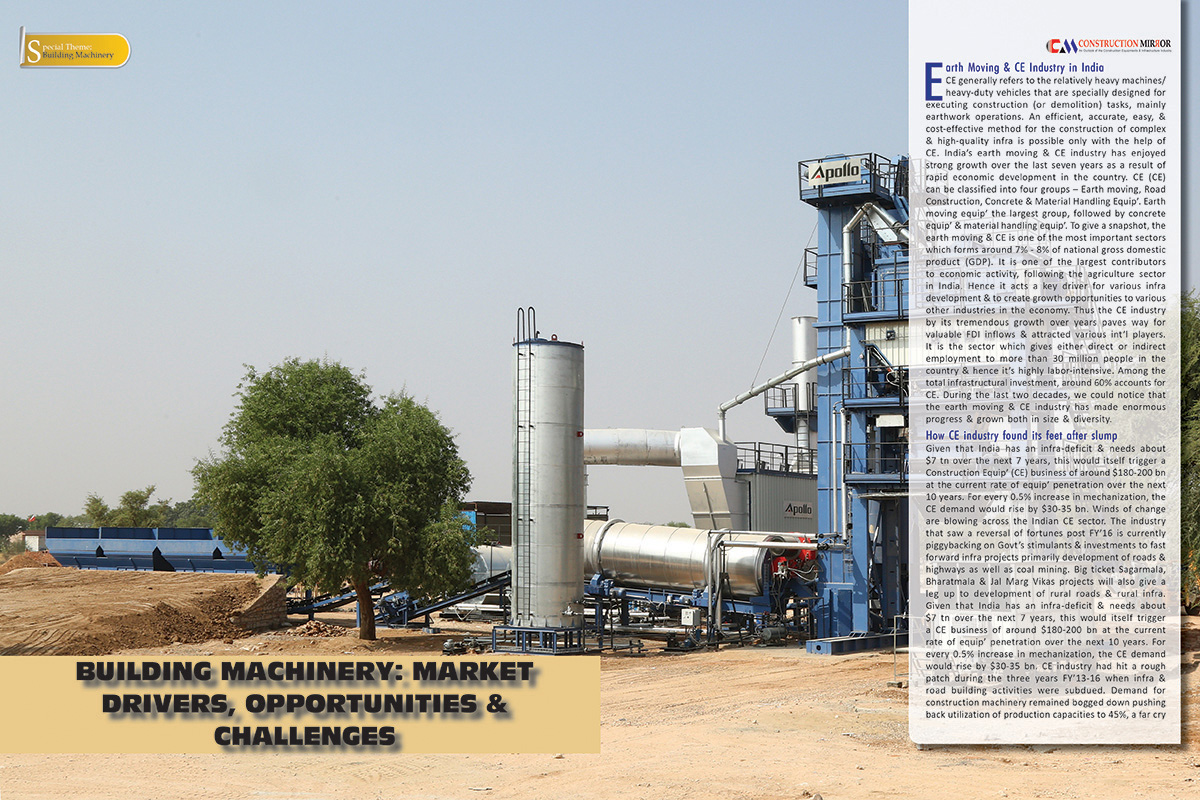


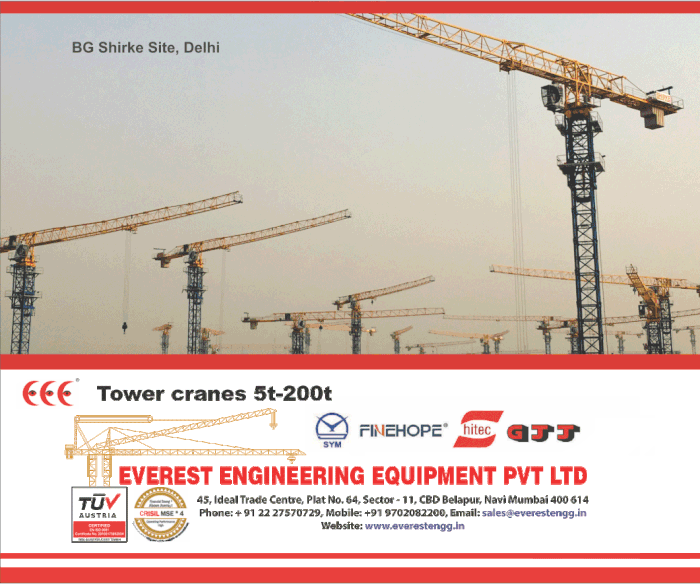
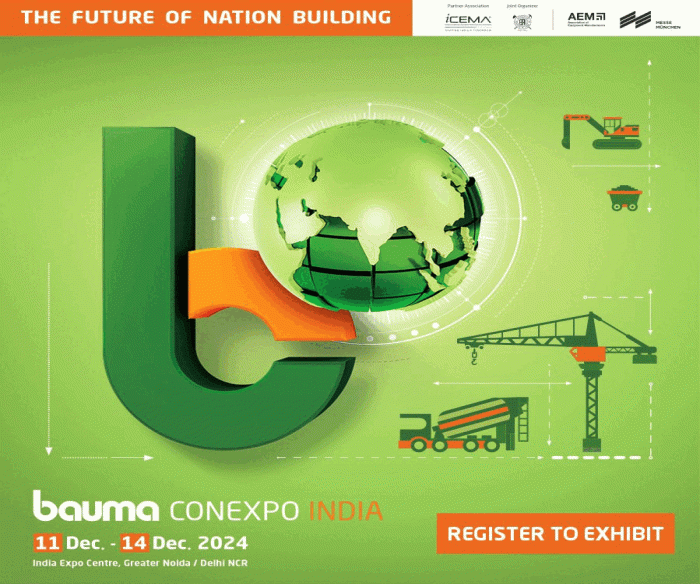
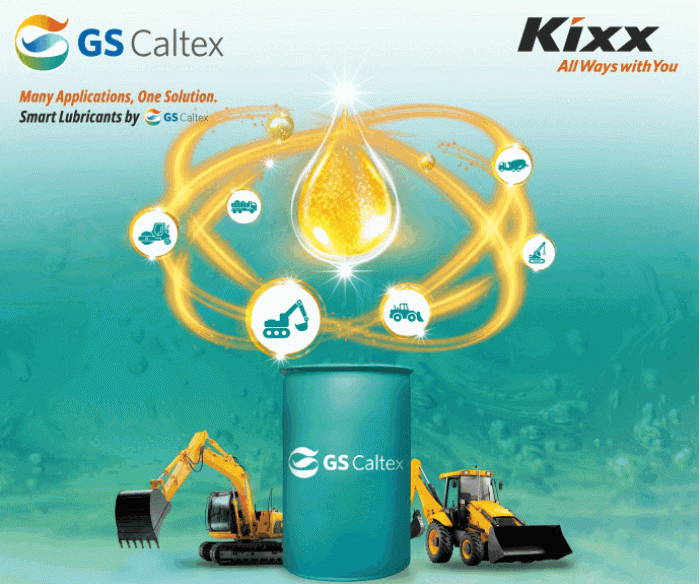
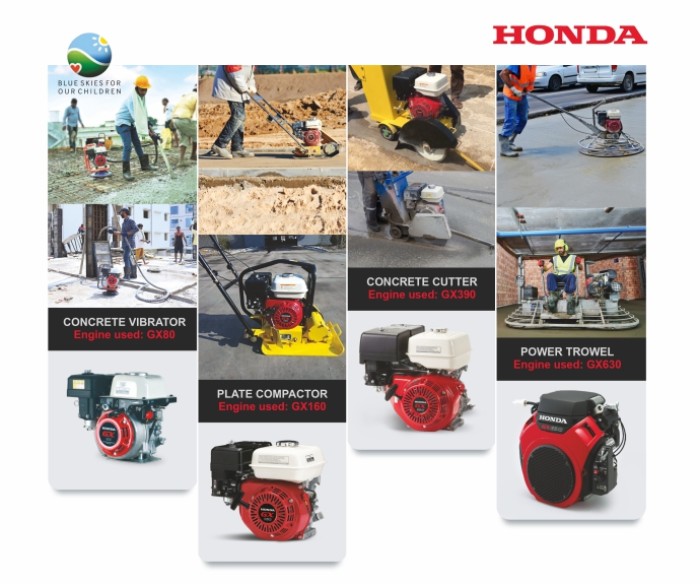
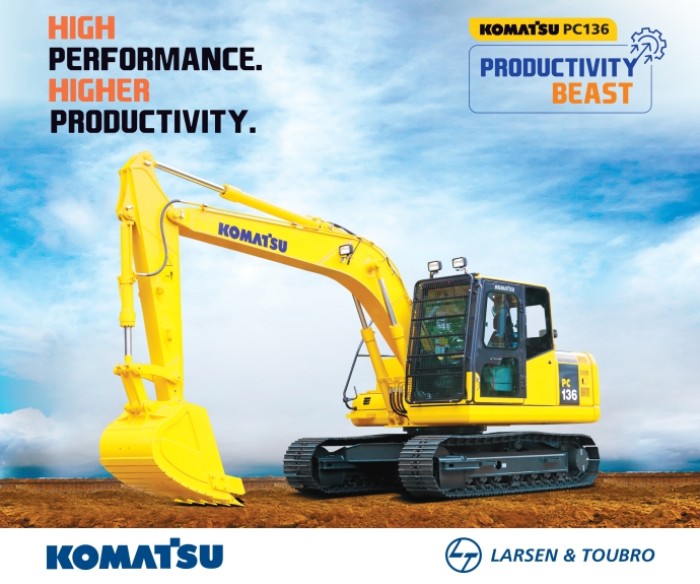

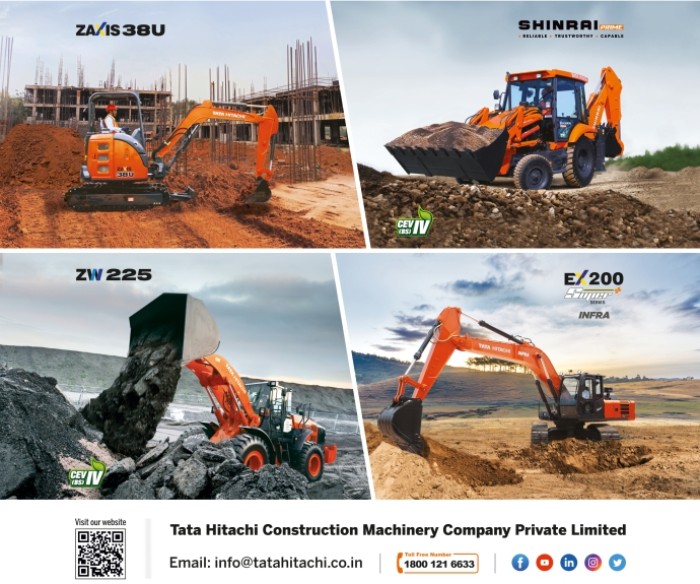



Leave a comment